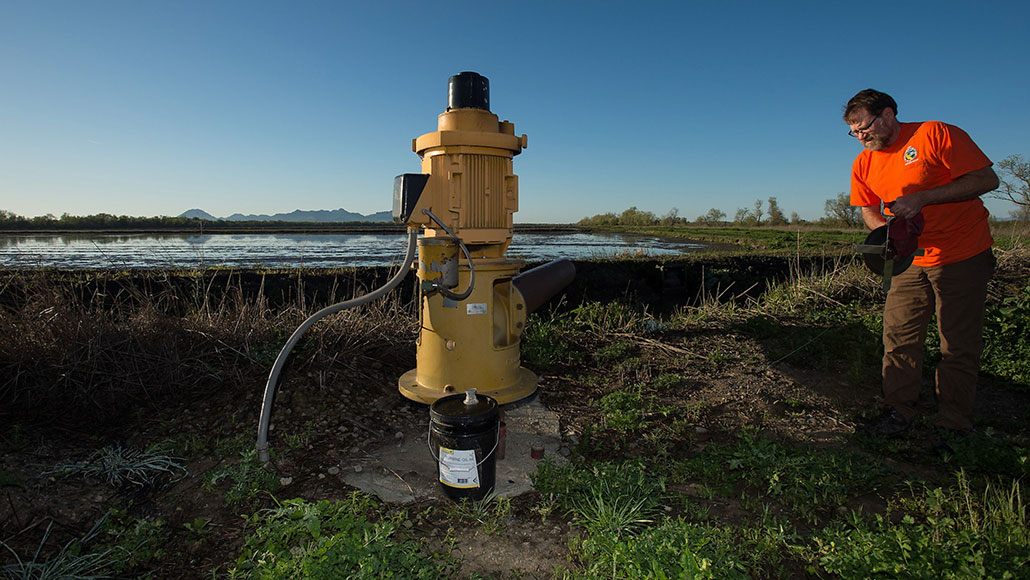
As California gets hit with its second atmospheric river in a week, California Coastkeeper Alliance is reflecting on how the state can better prepare for wild swings between drought and flood – a ‘new normal’ that we can expect to worsen with climate change. Our third strategy centers around a critical but often overlooked water source: groundwater.
Groundwater is the water that soaks into the soil and is stored underground, and contributes to California’s water supply through wells and pumps. Groundwater storage represents both a practical solution to the state’s additional water storage needs and a tool to help manage groundwater more sustainably. Unfortunately, groundwater levels are declining across the state, not just from California’s current drought, but from decades of chronic overuse. Augmenting water supply through recharge into aquifers presents a way of increasing the availability of groundwater for the inevitable dry times ahead.
To replenish our groundwater, California first needs to protect our existing groundwater supplies. The state’s signature groundwater law, the Sustainable Groundwater Management Act, or SGMA, is failing to address the need to sustainably manage our groundwater in a timely manner. The state needs to get serious about its oversight and enforcement role as it pertains to local Groundwater Sustainability Plans that have, to-date, failed to sustainably manage local communities’ groundwater basins. Communities also need to do a better job of managing surface and groundwater as interconnected resources. California Coastkeeper Alliance recently brought a public trust lawsuit against the County of Sonoma for failing to protect public resources when issuing groundwater permits. The lawsuit resulted in a temporary moratorium on new wells as the County develops an ordinance to manage surface and groundwater supplies as interconnected systems.
California cannot replenish what is already polluted. Throughout the state, but particularly in rural agricultural regions, our groundwater supplies are heavily polluted with salts and nitrates due to years of over application of fertilizers and irrigated water. It is time California regulates agricultural pollution by setting achievable numeric limits for fertilizer application along with reasonable timelines to achieve compliance. The state also needs to divert its fixation with ocean desalination and instead invest more resources into groundwater desalination. Groundwater desalination is essentially groundwater cleanup, making the existing water suitable for irrigation but at a fraction of the cost and none of the environmental harms associated with ocean desalination.
Lastly, California needs to move away from the antiquated mindset of building dams and instead focus on groundwater replenishment during winter months. This can be done several ways. When we receive excessive rainfall – as we are experiencing now – allow overfilled rivers to be diverted to floodplains and allow that water to percolate into the ground for use during warmer, drier months. It can also be done by investing in water recycling. California is a national leader on potable reuse by injecting drinkable water into the ground to be pumped up for future use. Instead of arguing about obsolete dams, it is time California take groundwater replenishment more seriously as we adapt to climate change and our new normal.
Miss the first parts of our “Drought to Flood” series? Learn how floodplain restoration and stormwater capture can also help California prepare for its uncertain water future.

Executive Director Sean Bothwell leads CCKA’s initiatives to fight for swimmable, fishable, and drinkable waters for all Californians.



